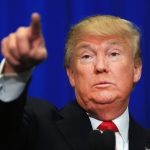Gas and coal fired power will remain in Australia’s energy mix under a new “Low Emissions Target” scheme, which the government believes will help the country meet its Paris Accord commitments.
The Federal Government is leaning towards this scheme, in the wake of US President Donald Trump announcing that he was withdrawing his country from the Paris agreement.
With only a week to go until Chief Government Scientist Alan Finkel presents his energy report to the Australia’s governments, there are very strong indicns that Prime Minister Malcolm Turnbull will select the LET scheme after having ruled out an EIS for political reasons. This would come into effect in 2020 and will help Australia meets its 2030 emissions reduction target.
What are the options regarding emissions?
Another option is an emissions trading scheme, where every tonne of carbon emitted attracts a price. Another alternative is an Emissions Intensity Scheme (EIS) where polluting is allowed until certain levels, after which penalties are imposed.
What is different about the LET is that it stipulates that a certain percentage of energy must be generated from low emission sources. This would include renewables, gas and coal using carbon capture and storage technology – if it can be developed.
The case for an LET scheme was given further credence in a joint report by the Climate Change Authority and the Australian Energy Market Commission which said that while an EIS would have been the preferred option, modeling indicates that an LET can achieve deep reductions and if designed well, can have lower impacts in retail electricity prices than an EIS.
Climate Change Authority chair Wendy Craik acknowledged that LET was a second best option, but was the best of the alternatives to an EIS.
“The government has been explicit about ruling out an EIS, so we said: ‘In that case the government might like to consider a LET, because based on our modelling from last year it stacks up quite well,” Dr Craik said.
In anticipation of adopting a LET scheme, Energy Minister Josh Frydenberg announced that the Clean Energy Finance Corporation, a $10 billion green energy investment fund, would have its mandate extended to invest in carbon capture and storage technology.
Australia will stick to Paris Accord commitments
Mr Turnbull said Australia would adhere to its end of the bargain to reduce emissions from 2005 levels by between 26 per cent and 28 per cent by 2030.

“The President’s announcement is not a surprise; it was a very core campaign commitment of his. It is disappointing. We would prefer the United States to remain part of the agreement,” Mr Turnbull said. “We are committed to the Paris Agreement. The important thing is to ensure that we maintain energy supplies that are affordable, that are reliable, secure, and that we meet our emissions targets and we are on track to do just that.
Mr Turnbull’s most immediate threat comes from his back bench. He lost his leadership in 2009 in a revolt driven by conservatives who opposed him joining with Labor to put a price on carbon. While Tony Abbott declined to comment, other conservatives said Australia should rethink its stance on the Paris accord given the American withdrawal.
The government will be hoping it can convince the backbench that it can design a LET scheme with minimal power price rises. This would give it political leverage over Labor, which advocates an EIS that would push up household power bills, which could have more of an impact on prices.
About Leading Edge
Leading Edge Energy is an energy cost reduction consultancy. We assist our clients by applying a holistic lens to your energy costs whereby we guide you through the complete energy cost reduction cycle from rates minimization to energy efficiency, solar generation and battery storage.
Our initial review and assessment process is a complimentary service and you are not obliged to accept any offer that we recommend to you.
Call us today on 1300 852 770 or visit our website to get a quote













